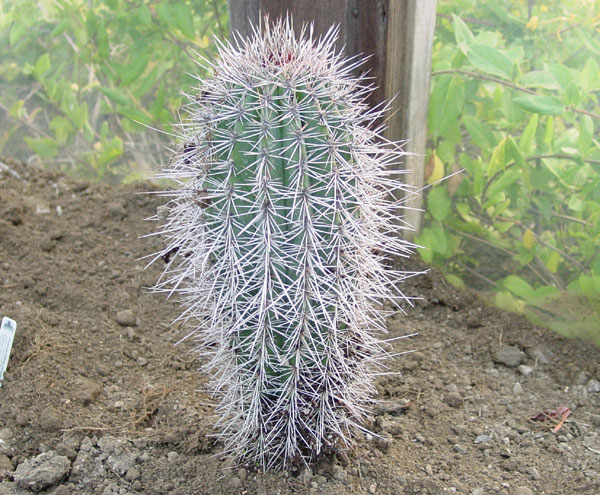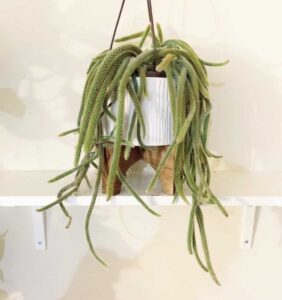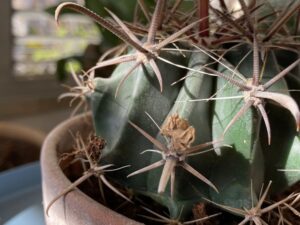The Sonoran Desert, a sprawling arid expanse that stretches across parts of Arizona, California, and Mexico, is home to two of the most iconic cacti: the Cardon cactus and the Saguaro. Both species are marvels of adaptation and serve as keystones in their respective ecosystems. However, they exhibit distinct differences that influence their roles in desert life. Understanding these differences is crucial for conservation efforts and for enthusiasts interested in these majestic plants.
Before delving into the particulars, it’s essential to appreciate the environments that these cacti inhabit and the unique challenges that have shaped their evolution.
Habitat and Geographical Range
The Cardon cactus, known scientifically as Cerocactus gigantorhizus, is primarily found in the Baja California Peninsula of Mexico. This gigantic cactus thrives in the hot, arid climate of its native range and boasts an impressive height, often surpassing 20 feet. Its environment can be hostile; temperatures vary drastically, surging to scorching highs during the day and plummeting at night. The Cardon’s ability to flourish in such conditions is pivotal to its survival.
In contrast, the Saguaro cactus, Carnegiea gigantea, is emblematic of the Sonoran Desert. This species can grow up to 40 feet tall and may live for over 150 years. The Saguaro usually flourishes in slightly more temperate areas than the Cardon, often forming dense forests in specific regions of Arizona. Its adaptations to the desert climate make it a resilient survivor, capable of withstanding drought and storing water efficiently.
Physical Characteristics to Distinguish
When it comes to physical traits, the Saguaro and Cardon cacti are readily distinguishable. The Saguaro is characterized by its iconic tall silhouette, with multiple upward-curving arms extending from its central trunk. Its flowers bloom in late spring, displaying beautiful white blossoms that are often pollinated by bats and birds. The skin is covered with a protective layer of wax, minimizing water loss and reflecting harsh sunlight.
In contrast, the Cardon cactus eschews the branched structure of its Saguaro cousin. While it reaches towering heights, it typically features a single, robust trunk, adorned with an array of spines. The Cardon displays a unique feature: its flowers, which bloom in the summer, are often larger and more fragrant than those of the Saguaro. These flowers are crucial for attracting pollinators, including bees and bats, ensuring successful reproduction.
Ecological Impact and Role
Both cacti play integral roles in their ecosystems, providing essential resources for various forms of desert wildlife. The Saguaro cactus, despite its slower growth rate, becomes a living habitat as it matures. Numerous birds, such as woodpeckers and finches, take refuge in its towering arms, while small mammals and reptiles often make their homes in the crevices. The Saguaro’s fruit, a bright red berry, is a vital food source for desert animals, especially during the scorching summer months.
Meanwhile, the Cardon cactus holds its own ecological significance. Its size allows it to serve as a water source for many creatures, and the flowering season heralds a flurry of activity among pollinators. Furthermore, the Cardon’s fruit, which is less frequently discussed, is consumed by local wildlife and humans alike, often used in traditional dishes and beverages.
Cultural Significance: A Tale of Two Cacti
Throughout history, cacti have grown beyond mere survival; they have shaped cultures and traditions. The Saguaro holds a special place in the hearts of the Tohono O’odham tribe. It symbolizes strength and resilience and has been integrated into their stories and folklore. The annual Saguaro fruit harvest signifies communal unity, where tribe members gather to gather the sweet, succulent bounty.
Conversely, the Cardon’s significance is woven into the fabric of Mexican culture. Its towering stature evokes reverence among the local population. The fruit is celebrated in various regional festivals, highlighting its importance as both a food source and cultural artifact. Artisans often utilize the Cardon in crafts, reflecting its integration into both economic and social spheres.
Conservation Efforts: Protecting the Giants of the Desert
As urban development encroaches on natural habitats, both the Saguaro and Cardon cacti face threats from land clearing, climate change, and invasive species. Conservation efforts are critical to sustain their populations. Organizations dedicated to educating the public about the ecological importance of these cacti advocate for legal protections, habitat preservation, and community involvement to ensure the survival of these sustainable giants.
Individuals interested in cultivating these cacti in their gardens must also be mindful of the environment they provide. Replicating the right conditions for growth and attention to water management are paramount. In a way, responsible cultivation acts as a microcosm of larger conservation efforts, fostering a respect for these botanical wonders.
Conclusion: The Heart of the Desert
In summary, both the Cardon cactus and the Saguaro present characteristic differences that underline their adaptations and significance within the Sonoran Desert ecosystem. Whether viewed through a lens of ecological function, physical traits, or cultural importance, each species embodies the spirit of resilience that characterizes desert life. As stewards of the environment, it is our responsibility to respect these ancient giants and ensure that they not only survive but thrive in the desolate beauty of their native habitats.




Leave a Comment